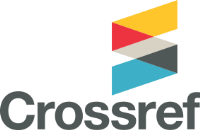FORMATION OF GRAMMATICAL SPEECH STRUCTURE IN CHILDREN WITH GENERAL SPEECH UNDERDEVELOPMENT: AN INTERDISCIPLINARY APPROACH WITHIN INCLUSIVE EDUCATION
DOI:
https://doi.org/10.32782/inclusion/2025.6.4Keywords:
general speech underdevelopment, grammatical structure of speech, inclusive education, speech therapy, interdisciplinary approachAbstract
This article examines the interdisciplinary approach in speech therapy work with children who have general speech underdevelopment (GSU) within the context of inclusive educational environments. Special emphasis placed on the formation of grammatical structures as a key stage in developing speech competence in children with speech impairments. The author analyzes current scientific perspectives and practical methodologies aimed at overcoming speech deficits through the integration of speech therapists, psychologists, educators, and other specialists.An important place is given to the description of such effective methods as speech modeling, linguistic games, sensory-object support, and interactive game technologies. These approaches ensure the gradual formation of grammatical categories through the child's active participation in communicative situations, the use of multichannel perception, and emotionally charged tasks. The article highlights the importance of adapting corrective methods to the individual characteristics of each child to maximize the effectiveness of intervention.Innovative speech therapy technologies implemented in inclusive education practices are discussed, including interactive game-based methods, logorhythmics, and sensorimotor exercises.The analysis of these methods demonstrates that interdisciplinary collaboration among professionals creates conditions not only for the development of lexical-grammatical skills but also for the comprehensive development of communicative competence. It is noted that the effectiveness of speech therapy work significantly increases when the family is involved and a systemic approach is used in building the educational and correctional process. The research results confirm that comprehensive support in an inclusive environment contributes not only to overcoming speech difficulties but also to the child's successful socialization, improving the quality of their learning and life. The proposed methods can be effectively applied both as part of individual support and in the daily educational process of an inclusive institution. This article is intended for speech therapists, educators, psychologists, parents of children with speech disorders, as well as researchers focused on inclusion and speech development.
References
Денисенко Д. В. Особливості лексико-граматичної складової мовлення у дітей із ЗНМ ІІ рівня. Сучасні проблеми логопедії та реабілітації : матеріали VIІ Всеукраїнської заочної науково-практичної конференції, (15 лютого 2018 року, м. Суми). Суми : ФОП Цьома С. П, 2018. С. 57–61.
Толстопятих А. В. Формування граматичної будови мовлення у дошкільників із ЗНМ на основі застосування наочності у корекційному процесі. Сучасні проблеми логопедії та реабілітації : матеріали VI Всеукраїнської заочної науково-практичної конференції. Суми : ФОП Цьома С. П., 2017. С. 154–157.
Сучасні проблеми логопедії та реабілітації: матеріали VIІІ Всеукраїнської заочної науково-практичної конференції (15 лютого 2019 року, м. Суми). Суми : ФОП Цьома С. П., 2019. 196 с.
Федоренко С., Погребняк В. Шляхи оптимізації соціальної адаптації дошкільників із загальним недорозвиненням мовлення в інклюзивних групах закладу дошкільної освіти. Освіта осіб з особливими потребами: шляхи розбудови, 2(25), 259–271. https://doi.org/10.33189/epsn.v2i25.270








